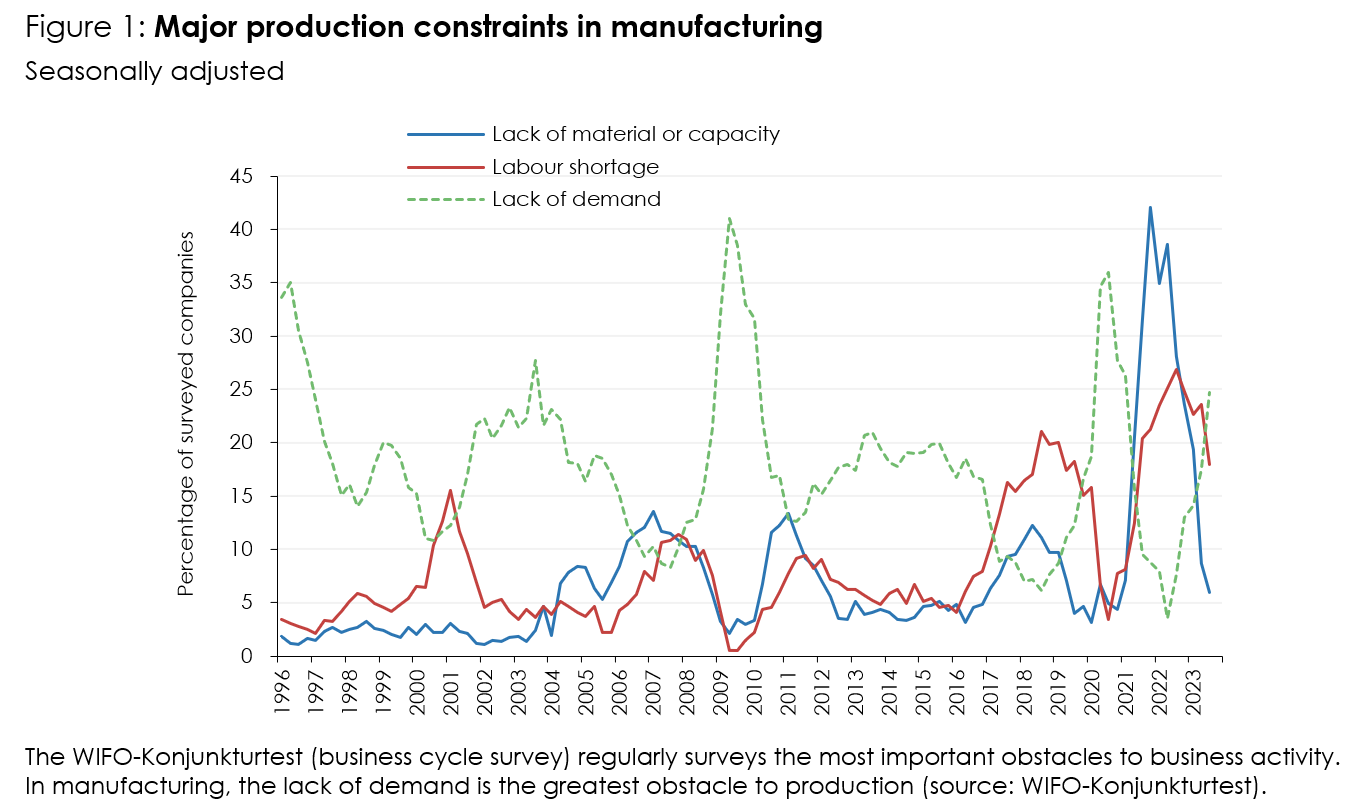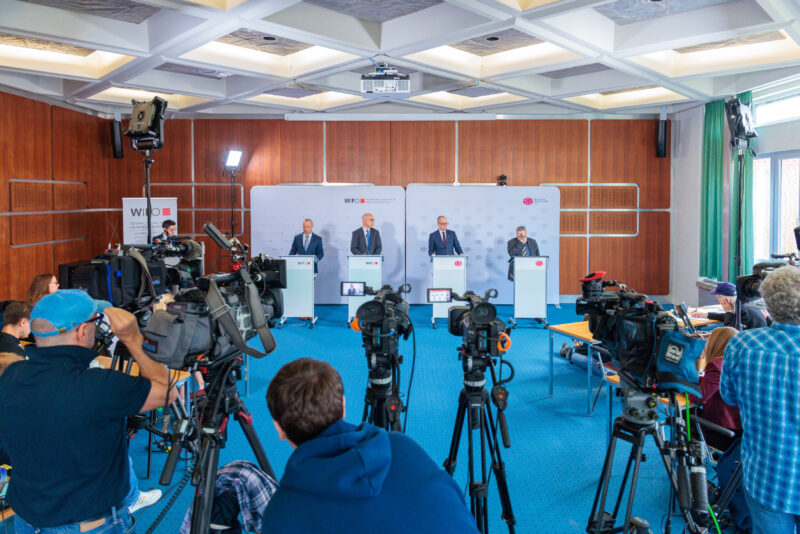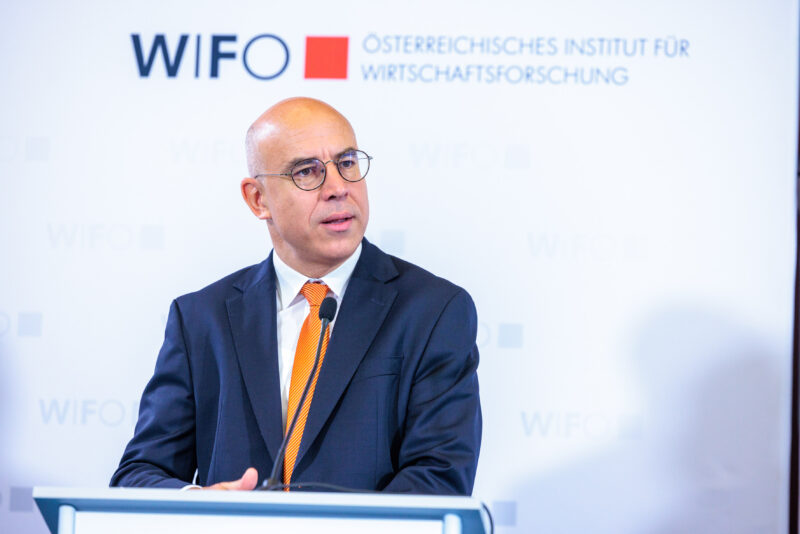
Stagnation Turns into Downturn – Leading Indicators Deteriorate Further
"The lack of demand is now the most important obstacle to production," says Christian Glocker, author of the current business cycle report.
Although the global economy grew somewhat more strongly in the first quarter of 2023 than before, the picture is very heterogeneous. A clear expansion in the emerging markets contrasts with weak development on average in the industrialised countries.
Austria's economy entered a phase of stagnation in mid-2022, which lasted until the first quarter of this year. With a decline in economic activity in the second quarter of 2023, the situation has now deteriorated. Leading indicators recently declined further from an already low level. The contraction of the economy is therefore likely to continue. In addition to the short-term outlook, the medium-term outlook is also gloomy, especially since a significant loss of price competitiveness is to be expected, which will weigh on the export economy.
The results of the WIFO-Konjunkturtest (business cycle survey) of July show a renewed deterioration in companies' economic sentiment. The assessments of the situation were once again more sceptical than in the previous month and were in the pessimistic range for the first time since March 2021. In manufacturing, expectations are dampened above all by the sharp decline in order backlogs.
Price inflation has recently weakened further but remains strong. The slowdown in producer price inflation observed for some time as well as the decline in energy prices are now more clearly reflected in consumer prices. However, the latter were still 8.0 percent above the previous year's level in June (according to the CPI; flash estimate for July +7.0 percent).
The economic weakness is now increasingly reflected in the labour market. Unemployment continued to rise recently, while the number of job vacancies decreased and the increase in employment has largely come to a standstill. In July 2023, according to preliminary estimates, the number of employed persons was only 29,000 above the previous year's level (+0.7 percent), after +45,000 in June. At the end of July, about 15,000 more persons were registered as unemployed than a year ago (+6.3 percent). The unemployment rate (national definition) is thus likely to have been 5.9 percent (+0.3 percentage points compared to the previous year).
Please find the entire business cycle report here (German version).

Publications
Please contact

















